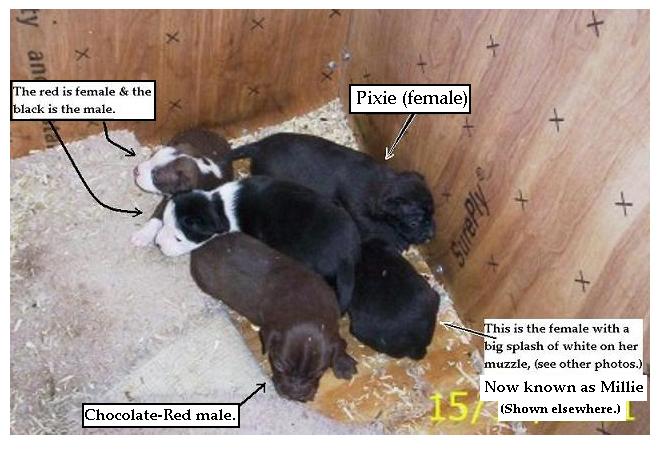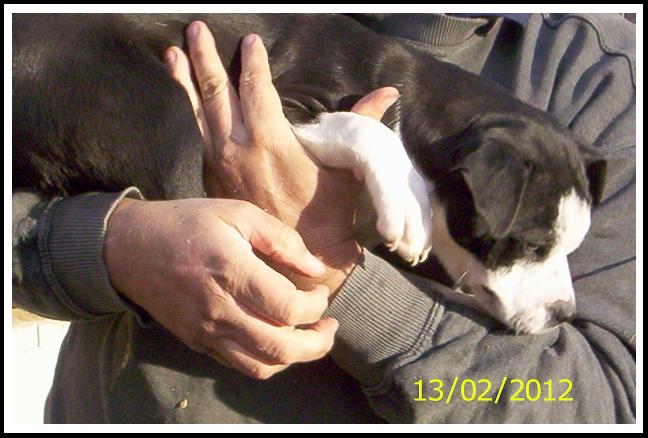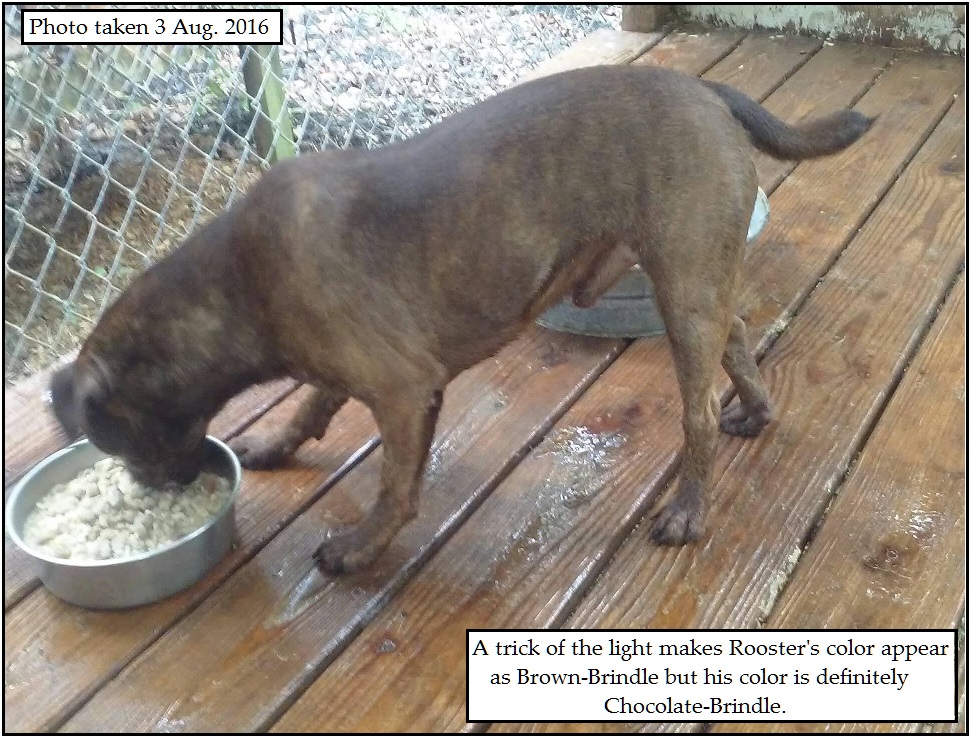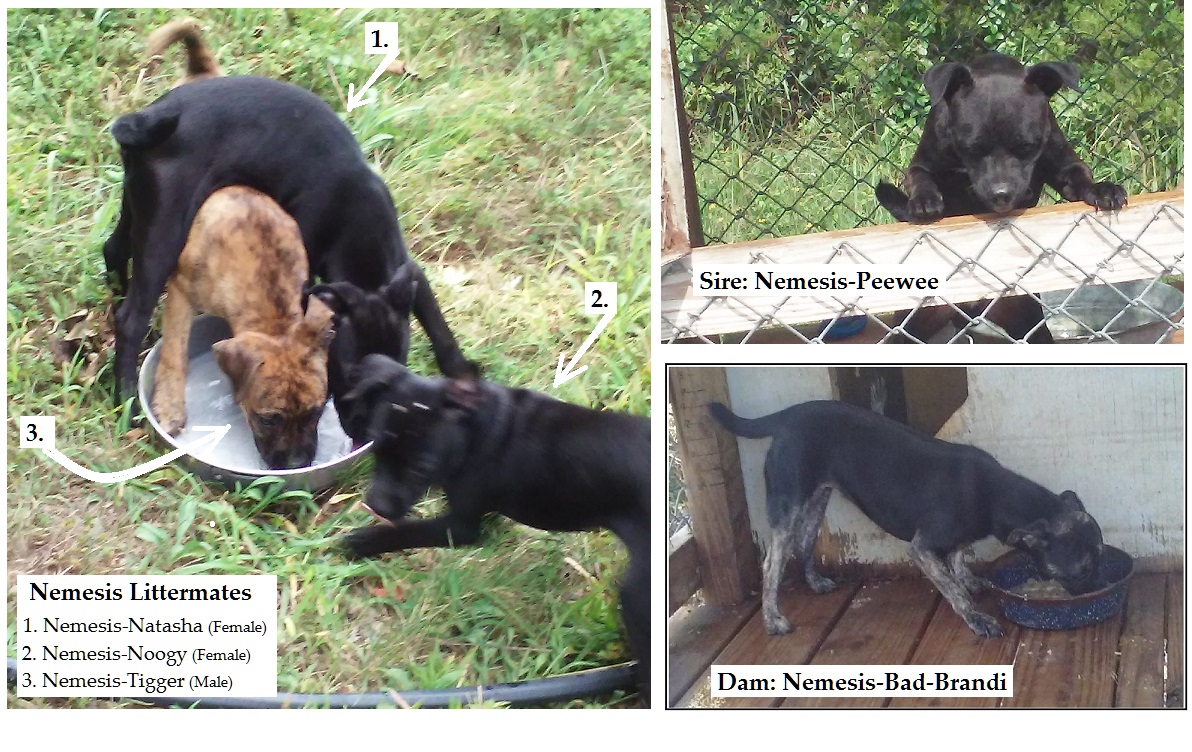|
What a Patterdale Terrier might look like!
We've become the bad boys of the Patterdale Terrier world because we don't hide these truths. This is a Big subject so be sure to scroll all the way down the page. It's amazing!
Always remember, a particular color or "look" is-not what makes a Patterdale Terrier.
The show-dog crowd only likes black or
chocolate colored dogs even though they know it's the breeding [pedigree] and the performance that prove what they are. If "Game-Getter" performance had a color-code...
whatever that color was would be our favorite and we'd breed for it!
When dogs are bred for performance (instead of looks) you'll eventually see all the colors and patterns in their genes. While black and chocolate are the best known colors associated with Patterdale Terriers there are other colors and patterns seen with some regularity, (see the photos below.)
 This (above) is the 3rd litter of the same parents, Pebbles & BamBam, (both black dogs.) This (above) is the 3rd litter of the same parents, Pebbles & BamBam, (both black dogs.)
Pixie (a black-brindle) ... was kept in G.L.& C. Co.'s kennel operation. Her page is here somewhere.
"Millie" (black w/white marks) ... is view-able on the Other Photos page.
Chocolate-Red male, called Redman, ... went to a fox hunting club.
White-face male is "Whitey" and his sale was brokered for us by Todd Fulford. (Many thanks Todd!)
White-face female is "Soozy" who is enjoying a life of privilege and comfort as a white-collar companion/pet.
Fully-Grown Patterdale Terriers vary greatly in size which might be anything between 10-lbs to 30-lbs. Here is another look at that white-faced male "Whitey" shortly before sending him to Todd for delivery to his new owner. Whitey grew to be bigger than every other pup in the litter by the time he left here. We see the monsters, "dainty little Things" and all sizes in between come from the same litters.
There is no way to predict how big a small young puppy will be when it's a year+ old.
In America the smaller size seems to be favored and the show crowd has developed some that can only be described as "dainty little things."

This photo (below) shows the 1st litter from Whitey's parents. This is Brandon's Woodrow, a cool little dog from verified parents and proven bloodlines.
Woodrow is only 5-months at the writing of this note: He recently dug a bit to get into it with a groundhog. He went the distance with the 'hog and his face looks like it too! Seems like he's the real deal! Kudos to Brandon!
As stark examples of the "broken coat" appearance, these guys are awesome workers.
These two dogs, (above) are from super hi-caliber Patterdale Terrier stock in Oklahoma, USA.

The show-dog crowd makes a real effort to keep quiet about just how much appearance varies in these dogs. They hate to let the public know the truth, as shown in this photo.  It's presumptuous to say that a dog is or is-not a Patterdale Terrier based on just it's looks.
They're bred for what they're expected to do. They're not bred for what they look like.
It wouldn't matter if the dog was purple with green polka-dots as long as his parentage was known and he demonstrates his mettle in the classic way to the satisfaction of his breeder or owner.
It's breeding and performance that makes them Patterdale Terriers!
|